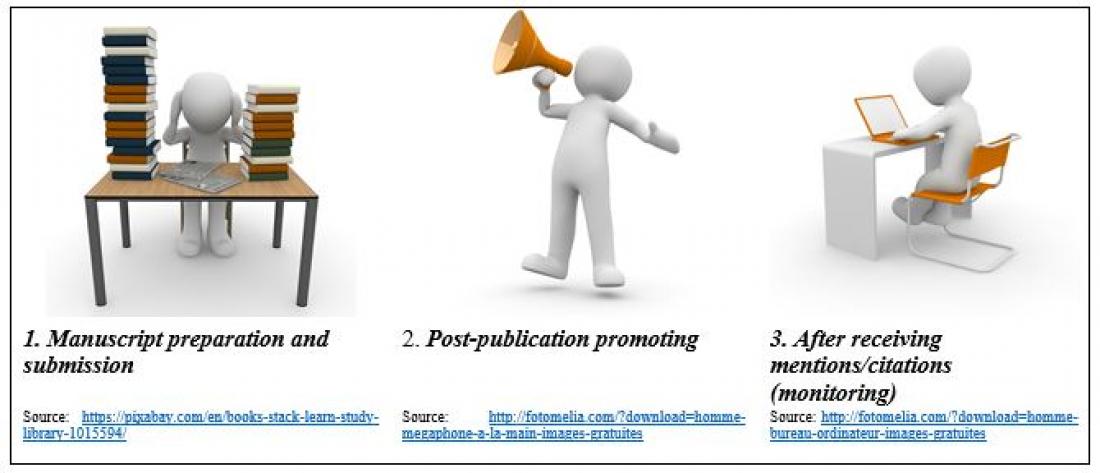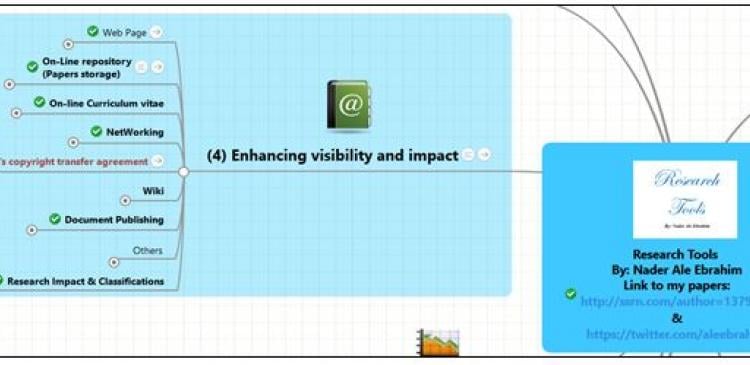Source: https://www.religiousstudiesproject.com/ways-to-increase-your-academic-visibility/
Ways to Increase Your Academic Visibility
by Adrian Andreescu, Associate Circulation Editor, IJTS
The Enigma
The aim of scholarly research is to make a contribution to the existing human knowledge. Still, many scholars are aware of valuable articles that are rarely cited in the academic literature. The innovative advances delayed by the cumulative research impact lost cannot be accurately calculated at this moment. Probably eighty years from now, future studies will present detailed insights into the causes and consequences of the early 21st century’s increased scholarship fragmentation.
One Motive (Among Others)
A large number of your peers (most of them outside your specific area of research) have a million and one reasons to do something other than spend long hours searching for articles from different fields and trying to find out which of them might offer (against the odds) some novel perspective or unexpected justification for their own research.
A Five-Step Solution to Increase Your Academic Visibility
1. Craft your articles for a larger audience.
There is no secret that papers grounded in and speaking to multiple fields often have the broadest impact and appeal. If most of your articles do not fall in this category, spend some time trying to identify a different academic audience that currently debates issues to which you could provide an unexpected perspective (concentrate on publishing in international journals across disciplines). Remember that “We are not students of some subject matter but students of problems. And problems may cut right across the borders of any subject or discipline”. (Karl Popper)
As dissemination of scientific publications via the web is becoming more common nowadays, serendipity is intricately woven within the fabric of a casual Google search. Make sure you write “search engine-friendly” papers (read here and here some useful tips).
Present your finding in ways that are credible and persuasive to the readers. Without engaging your expected audience into the text, a flawless logic of complex arguments might have in some cases alienating effects as many potential readers do not attempt to decipher those academic articles looking like an impenetrable thicket of words. In case you have been socialized into the norms of writing through a process of implicit learning, you might appreciate some articulated suggestions on academic discourse from peers like Sternberg (here), Boellstorff (here and here), Ellis (here), Bem (here and here), Caulley (here), Weick (here), Frank (here), Fernández-Ríos & Buela-Casal (here) or Knox (here).
2. Submit your articles to suitable journals.
Don’t aim only at those journals that are rejecting over 80% of the manuscripts submitted for consideration as this narrow approach might imply in the end a lot of frustration for you, a delay in publication and an inefficient use of reviewers’ time and energy.
3. Self-archive your papers.
Why it is very important to self archive your academic articles in a repository? Because the goal ofyour dissemination activity should be to maximise research usage and impact. Try to avoid uploading your papers exclusively in institutional repositories that are not open to public access. Better solutions are currently available (e.g., Social Science Research Network, The Social Science OpenAccess Repository, HAL, Hprint, OpenDepot, ResearchGate). Self-archiving is easy! As many articles can be self-archived in compliance with publisher policy, put them on the paths that most scholars use when they explore the information jungle. Open repositories are especiallyuseful when you are not publishing in journals that have sufficient mass to make your work rapidly visible to a wider international audience.
A brief synthesis relevant to the OA/non-OA debate can be found in an article published not long ago in Journal of Clinical Psychology:
“Harnad and Brody(2004) compared the citation counts of individual OA and non-OA physics articles appearing in the same (non-OA) journals (The OA articles in non-OA journals were made OA by their authors through self-archivede prints). They found citation advantages for OA articles of 200 to 300%, depending on the publication year. Similar studies have compared OA and non-OA articles in astronomy, computer science, electrical engineering, mathematics, philosophy, and political science, finding OA impact advantage rates of 25 to 250% (Antelman, 2004; Eysenbach, 2006; Hajjem, Harnad, & Gingras, 2005b; Kurtzet al., 2005a; Lawrence, 2001), with an average OA advantage of 93.2% in psychology (Hajjem et al., 2005a). […] Scholars wishing to maximise the diffusion of their research among the professional community should deposit prints of their work in OA archives. There are no copyright or other legal barriers to this OA strategy, with 91% of research journals (including all APA and Wiley journals) already giving their explicit green light to authors self-archiving of pre- or postprints (Eprints, 2008). One hundred percent OA is a reachable goal.”
4. Be committed to disseminate the findings of your work.
A “CERN for social scientists” is unlikely to be created in the next decades. In this context, you should become more involved in the dissemination of your papers. As stated by Shelley E. Taylor in her article, “marketing papers, a concept alien to some scientists, is increasingly important if we are to reach the multiple fields to which ourwork may contribute. […] We can send our papers out to a target audience that might otherwise not read the journal. Authors might be well advised to create a list of people in other fields unlikely to otherwise encounter the paper and e-mail it to them.”
5. Network curiously and habitually with other scholars.
You might consider creating an account on a site like Academia.edu. Your profile should not be limited to your name and the email address. Upload a photo, your papers, select at least some relevant research interests, “follow” the profiles of your peers, etc. Give others a chance to find out more about your work! Uncuriosity can be dangerously comfortable especially within the sophisticated, intellectual world of Academe. In the effort to raise your long-term visibility and impact, you must become aware of novel research opportunities. Also, remain curious about big, intractable problems and invest at least one hour/week for online interaction with scholars from outside your niche research area. Keep in mind that theoretical innovation and new findings come often through cross-fertilization and interdisciplinary research.
Note: You can help scholarly research circulate and interact more freely by forwarding the above educational hypertext to your peers or byposting it on any academic blog or listserv, under the CreativeCommons-Attribution-NonCommercial-ShareAlike3.0 . The author does not assume and hereby disclaims any liability to any party for any loss or damage resulting from the unappropriate use of information mentioned in Ways to Increase Your Academic Visibility (the web pages and their contents are provided on an “as is” basis, with out warranty of any kind, either express or implied from the author). Sept. 2010



